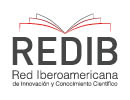Subversion of the marks of historicity in the New Latin American Historical Novel:
examples in Yo el Supremo of Roa Bastos
DOI:
https://doi.org/10.21142/DES-1503-2023-0044Keywords:
New Latin American Historical Novel, marks of historicity, Seymour Menton, Krzysztof Pomian, I the SupremeAbstract
The term «marks of historicity» was coined by Krzysztof Pomian to establish the non-fictionality of the historical text. The traditional historical novel appropriates these «marks of historicity» to give its discourse the appearance of being historical. On the other hand, the New Latin American Historical Novel, a term popularized by Seymour Menton, not only appropriates these «marks» by imitating them in form but also subverts them by applying the characteristics assigned by Menton. This is the objective of the present article. To achieve this, the methodology used was the analysis of the literary discourse present in the paratext of I the Supreme by Roa Bastos. It was primarily concluded that the New Latin American Historical Novel differs from the traditional one in that it subverts the «marks of historicity» and that it imitates them, that to subvert them resorts to parody, the carnivalesque and anachrony, and that in I the Supreme they are strategically subverted affecting its paratext.
Downloads
References
Aínsa, F. (1991). La reescritura de la historia en la nueva narrativa latinoamericana. Cuadernos Americanos, (28), 13-31. https://kupdf.net/download/la-reescritura-de-la-historia-en-la-nueva-narrativa-latinoamericana-fernando-ainsapdf_5c87ad70e2b6f59c6975d3a8_pdf
Barreras, A. (2001). El estudio de la ironía en el texto literario. Cuadernos de Investigación de Filología, (27-28), 243-266. https://publicaciones.unirioja.es/ojs/index.php/cif/article/view/2209/2078
Barrientos, J. (2001). Ficción-historia: la nueva novela histórica hispanoamericana. Universidad Autónoma de México. https://play.google.com/books/reader?id=-24nEAAAQBAJ&pg=GBS.PT9.w.0.1.16_42&hl=es_419
Carini, S. (2011). Deconstrucción del discurso histórico y reconstrucción de la memoria colectiva en Yo el Supremo, de Augusto Roa Bastos. Cuadernos de Aleph, (3), 39-56. https://dialnet.unirioja.es/servlet/articulo?codigo=4044717
Chatman, S. (1990). Historia y discurso: La estructura narrativa en la novela y el cine. Taurus Humanidades. https://kupdf.net/download/chatman-seymour-historia-y-discurso_5c6090eae2b6f5f665a79804_pdf .
Dapaz, L. (2000). Historia y mito en Yo el Supremo de Augusto Roa Bastos. Revista de Literaturas Modernas, (30), 9-40. https://bdigital.uncu.edu.ar/2594
Fernández, M. (2003). El universo significativo de Yo el Supremo. En P. León (ed.), Yo el Supremo (pp. 13-17). El Lector.
Genette, G. (1989). Palimpsestos: La literatura en segundo grado. Taurus. https://www.academia.edu/31986852/Gerard_Genette_Palimpsestos_pdf
Grützmacher, L. (2006). Las trampas del concepto «la nueva novela histórica» y de la retórica de la historia postoficial. Acta Poética, 27(1), 141-167. https://doi.org/10.19130/iifl.ap.2006.1.193
Guerrero, R. (2007). Narrativa histórica: El legado de la novela Yo, El Supremo de Augusto Roa Bastos en la consolidación de la identidad cultural del Paraguay. Ítsmica. (11), 209-223. https://www.revistas.una.ac.cr/index.php/istmica/article/view/552
Guzmán, M. (1993). Algunas consideraciones sobre la ficcionalizacion del discurso histórico. América: Cahiers du CRICCAL, 1(12), 55-61. https://www.persee.fr/doc/ameri_0982-9237_1993_num_12_1_1117
Lozano, J. (1994). El discurso histórico. Alianza Editorial. https://kupdf.net/queue/el-discurso-hist-oacute-rico-jorge-lozano-libro_58c76b23dc0d60be3733903a_pdf?queue_id=-1&x=1652321729&z=MTkwLjIzNy4yMzEuMjAz
Lukács, G. (1966). La novela histórica. Era https://www.academia.edu/36187758/Georg_Lukacs_La_novela_hist%C3%B3rica_pdf.
Martín-Rodríguez, M. (2013). La fictohistoria o historiografía imaginaria en las literaturas románicas desde el siglo XIX: ensayo de tipología y panorama de un género formal insospechado (I). Revista de Filología Románica, 30(2), 285-308. https://doi.org/10.5209/rev_RFRM.2013.v30.n2.45710
Menton, S. (1993). La Nueva Novela Histórica de la América Latina, 1979-1992. Fondo de Cultura Económica.
Perdomo, W. (2014). El discurso literario y el discurso histórico en la novela histórica. Literatura y Lingüística, (30), 15-30. https://www.redalyc.org/pdf/352/35233386002.pdf
Pomian, K. (2007). Sobre la historia. Cátedra. https://dokumen.tips/documents/pomian-sobre-la-historia.html?page=1
Prost, A. (2001). Doce lecciones sobre historia. Frónesis. https://www.academia.edu/15741563/Antoine_Prost_Doce_Lecciones_Sobre_La_Historia
Pulgarín, A. (1995). Metaficción historiográfica. La novela histórica en la narrativa hispánica posmodernista. Espiral Hispano Americano.
Roa, A. (2003). Yo el Supremo. El Lector.
Sabia, S. (2005). Paratexto. Títulos, dedicatorias y epígrafes en algunas novelas mexicanas. Espéculo. https://biblioteca.org.ar/libros/152176.pdf
Sánchez, R. (2006). Imaginación e historia en la novela hispanoamericana. Culturales, 2(4), 117-133. https://www.redalyc.org/pdf/694/69420405.pdf
Seydel, U. (2002). Ficción histórica en la segunda mitad del siglo XX: conceptos y definiciones. Escritos, Revista del Centro del Lenguaje, (25), 49-85. http://cmas.siu.buap.mx/portal_pprd/work/sites/escritos/resources/LocalContent/29/1/uteseydel.pdf
Sicard, A. (1979). Augusto Roa Bastos sobre Yo El Supremo. Inti: Revista de literatura hispánica, 1(9). https://digitalcommons.providence.edu/inti/vol1/iss9/3/
Sklodowska, E. (1991) La parodia en la nueva novela hispanoamericana. 1960-1985. Jhon Benjamins Publishing Company. https://tuxdoc.com/download/elzbieta-sklodowska-la-parodia-en-la-nueva-novela-hispanoamericana-1960-1985-pdf_pdf
Spang, K. (1995). Apuntes para una definición de la novela histórica. En K. Spang, I. Arellano y C. Mata (eds.), La novela histórica. Teoría y comentarios (pp. 65-114). EUNSA. https://books.google.com.pe/books/about/La_novela_hist%C3%B3rica.html?id=8p9dAAAAMAAJ&redir_esc=y
Valles, J. (2002). Diccionario de teoría de la narrativa. Alhulia. https://pdfcoffee.com/diccionario-de-teoria-narrativa-jose-r-valles-c-y-francisco-alamo-2002-pdf-free.html
Vásquez, C. (2018). La historia y la literatura, encuentros y desencuentros. En G. von Wobeser (ed.), Reflexiones sobre el oficio del historiador (pp. 159-176). Universidad Autónoma de México. http://www.historicas.unam.mx/publicaciones/publicadigital/libros/historiador_reflexiones/301a.html
Viu, A. (2007). Una poética para el encuentro entre historia y ficción. Revista Chilena de Literatura, (70), pp. 13-31. https://revistaliteratura.uchile.cl/index.php/RCL/article/view/1451/1339
Zavala, L. (2005). Ironías de la ficción y la metaficción en cine y literatura. UACM. https://www.academia.edu/4939703/Iron%C3%ADas_de_la_ficci%C3%B3n_y_la_metaficci%C3%B3n_en_cine_y_literatura
Downloads
Published
Issue
Section
License

Esta obra está bajo una licencia http://creativecommons.org/licenses/by-nc-sa/4.0/



















